Rare Rides Icons: The History of Kia's Larger and Full-size Sedans (Part VII)

We return to Kia’s midsize-or-larger sedan history today in the latter portion of the 2000s. In our last entry, we learned about the Optima, which arrived as Kia’s first midsize developed under Hyundai’s majority ownership. Sensibly the Optima was a light rework of Hyundai’s Sonata, and the two shared almost everything (including very poor crash safety ratings).
On the more executive full-size side of the lineup, Kia’s Opirus was the first large car developed under Hyundai ownership. It shared a platform with the Grandeur (XG350 to you). While the Opirus saw okay sales in most markets, it failed in North America where it was sold as the Amanti. Very few North Americans wanted a $39,600 (adjusted) Kia, no matter how many luxury styling touches it borrowed from other brands. And so the Amanti was canceled after 2009 locally (2012 elsewhere). By that time its replacement was already on sale. Meet K7.
In this instance, the Y platform transitioned to a new generation between the Opirus (Y5) and the K7 (Y6). Under Kia’s usage, the platform was called VG, while Hyundai called it HG. Like the Opirus and Grandeur a decade prior, the new K7 preceded a new Grandeur in production. Kia’s offering lead the way by two full years as Hyundai continued its staggered product release plan. It was probably for the best the K7 was released before the new Grandeur, as it was a new and unfamiliar model name that looked nothing like its predecessor. The Grandeur model dated back to the Eighties when Hyundai built its own version of the old Mitsubishi Debonair.
Underneath, the VG platform used a MacPherson front suspension and a multilink rear suspension, and the expected transverse engine front-drive layout. Engines were all of four- or six-cylinder persuasion and started on the small side at 2.4 liters from the Theta II engine family. There was also a 2.7-liter V6 from Hyundai’s Mu line (in gasoline or LPG formats), as well as 3.0, 3.3, and 3.5 versions of the Lambda V6. The 3.0 Lambda was also offered in LPG form, as many taxis and commercial vehicles in the South Korean market use LPG. All K7s were motivated by a six-speed automatic transmission, regardless of the market.
Aiming for a more balanced look than its predecessor, the wheelbase increased from 110.2 inches in Opirus to 112 inches on the K7. Showing how similar the platforms were, the width stayed exactly the same at 72.8 inches. Overall length was actually a bit shorter on the K7, even though it looked visually longer than the Opirus: 195.5 inches on the K7, 196.9 inches for the final version of the Opirus. The K7 was much more efficient with its weight, as the top weight of a fully equipped Opirus was a hefty 4,109 pounds, whereas the K7 was 3,726.
Given Kia’s experience with the largely panned amalgam styling of the Opirus (and its other cars), the company decided to focus on a styling theme of its own, in particular one that would appeal to the European market. To that end, Kia hired a well-known dedicated stylist in 2006: Peter Schreyer.
Schreyer came to Kia directly from Audi. A long-time employee of the Volkswagen group, he started at Audi in 1980. In 1991 his role was moved to Audi’s design office in California but returned to Germany the following year. Immediately after that, he went to design things for Volkswagen (like the ’98 Golf). Simultaneously he worked at Audi and designed the original A3, the 1997 A6, the A4 of 2000, and his best-known work: The TT.
Kia imported Schreyer to be its chief design officer, where he undertook a complete do-over of Kia’s styling. At the time the K7 was developed, he was in charge of Kia design work in Korea, Germany, the U.S., and Japan. Early work resulted in the Kee concept, which was displayed in 2007 at the Frankfurt Motor Show. The concept was particularly important as it debuted the new Tiger Nose grille.
The Tiger Nose was implemented (albeit in a restrained way) on the K7 when it launched in 2010. Set into a grille of thin vertical vanes, the overall look of the K7 was much more cohesive than the Opirus it replaced. Large headlamps had sharp corners and didn’t look too astray from the recently introduced Buick Regal. But the front end accomplished the “generally European” look Kia sought. The bumper blended into the fenders in a smooth way, with some sculpting around the grille that swept downward to large fog lamps. The corner of the headlamp formed the start of a character line that traveled the full length of the K7.
The upper character line was supported by a secondary one that started in the front door and continued through both door handles and to the rear. Smooth surfaces abounded below the door handles which were grab style and chromed with a body-colored insert. The greenhouse was of an average sort, with a sort of take on the old Hoffmeister kink at the rear door. On the lower portion of both doors, a continual chrome spear added a bit of visual interest.
The K7’s rear was sculpted similarly to the front, with lots of smooth edges and not a lot of detail. The character line faded into a crease at the rearmost point of the fender and blended into large brake lamps that were Jetta-like. A smooth trunk lid wore a large Kia logo that looked pressed into the metal. Behind the rear tire, the chrome spear that ended at the rear door resumed its course and wrapped around the bumper. Large trapezoidal chrome exhaust outlets finished the look of the rear end.
The K7’s interior charted a new course compared to the Opirus, too. Unlike its predecessor which gathered Lexus, Jaguar, and Lincoln cues, the K7 went its own direction for most of its cabin. Dominating the view of the dash was an aggressive character line that cut in from the A-pillar from both sides, and formed a sort of shield shape in the center stack. Lines cut inward, outward, and then inward again before they resumed a straight line down the center console.
Similar trim styling was used on the doors, which looked as though they had separate inserts for the upper door panel that contained the door handle. Materials were largely shiny grey and black plastic when the K7 debuted, though there was much revision as the model continued its life. One of the first things to go was the crazy shape applied to the exterior of the center stack.
Gauges no longer mimicked Cadillac and its STS but instead mimicked the simple look of the VW-Audi group cars. Red needles stood out on white backlit gauges with a black background. Almost a copy and paste of an Audi of the time. Another copy-paste occurred in the K7’s key, which was a switchblade style very familiar to any VW or Audi owner.
It took Kia some time to gather itself and edit the K7 into a Cadenza for the North American market. However, during those few years, it had an even larger full-size car already in development, which landed in North America prior to the Cadenza. We’ll pick up with Cadenza’s North American launch next time and cover its bigger brother, the largest Kia sedan ever made.
[Images: Kia]

Interested in lots of cars and their various historical contexts. Started writing articles for TTAC in late 2016, when my first posts were QOTDs. From there I started a few new series like Rare Rides, Buy/Drive/Burn, Abandoned History, and most recently Rare Rides Icons. Operating from a home base in Cincinnati, Ohio, a relative auto journalist dead zone. Many of my articles are prompted by something I'll see on social media that sparks my interest and causes me to research. Finding articles and information from the early days of the internet and beyond that covers the little details lost to time: trim packages, color and wheel choices, interior fabrics. Beyond those, I'm fascinated by automotive industry experiments, both failures and successes. Lately I've taken an interest in AI, and generating "what if" type images for car models long dead. Reincarnating a modern Toyota Paseo, Lincoln Mark IX, or Isuzu Trooper through a text prompt is fun. Fun to post them on Twitter too, and watch people overreact. To that end, the social media I use most is Twitter, @CoreyLewis86. I also contribute pieces for Forbes Wheels and Forbes Home.
More by Corey Lewis
Latest Car Reviews
Read moreLatest Product Reviews
Read moreRecent Comments
- ToolGuy If these guys opened a hotel outside Cincinnati I would go there to sleep, and to dream.
- ToolGuy Michelin's price increases mean that my relationship with them as a customer is not sustainable. 🙁
- Kwik_Shift_Pro4X I wonder if Fiat would pull off old world Italian charm full of well intentioned stereotypes.
- Chelsea I actually used to work for this guy
- SaulTigh Saw my first Cybertruck last weekend. Looked like a kit car...not an even panel to be seen.




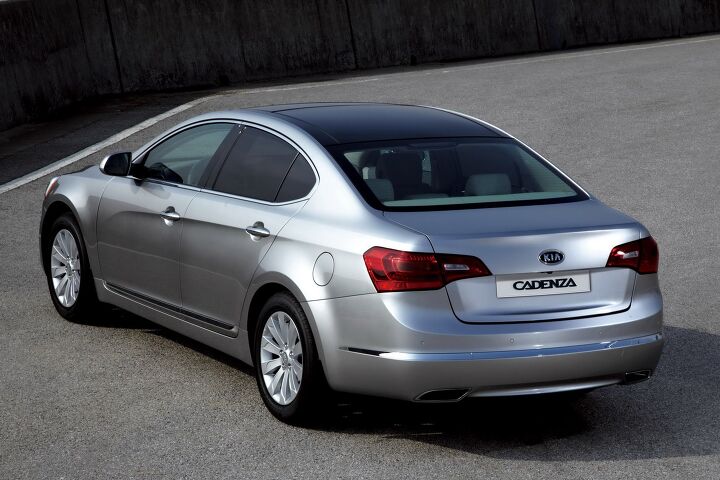




















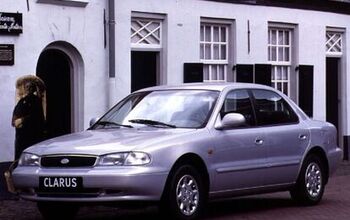
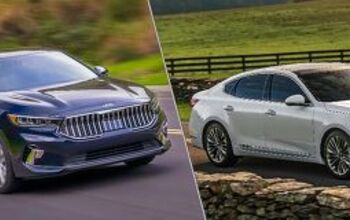
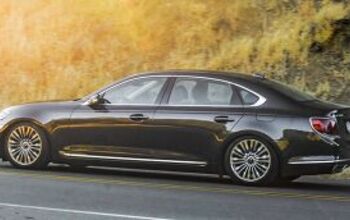
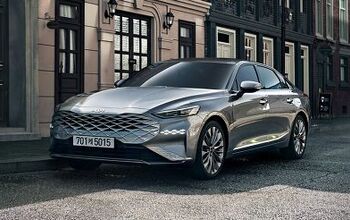











Comments
Join the conversation
I always through this and the Azera were rather underrated cars. Unfortunately, they hit the market right as the big-sedan market evaporated.
i tested a 2020 Kia K900 that was sitting unloved on a dealer lot for months. this was during the summer of 2020. it sat bc people wanted suv's over ANY sedans that were available. it was an unexpected gem of a vehicle! the interior was amazing - Lexus/BMW levels of interior content & features, rear passenger controls & shades. it had a rev-ready TT-V6 & AWD. it was the precursor to a similarly equipped/priced Genesis sedan. at the time, it had a dealer-reduced price at $36k with maybe 300 miles on the odo. cant find nothing like that & at that price today. sheesh!